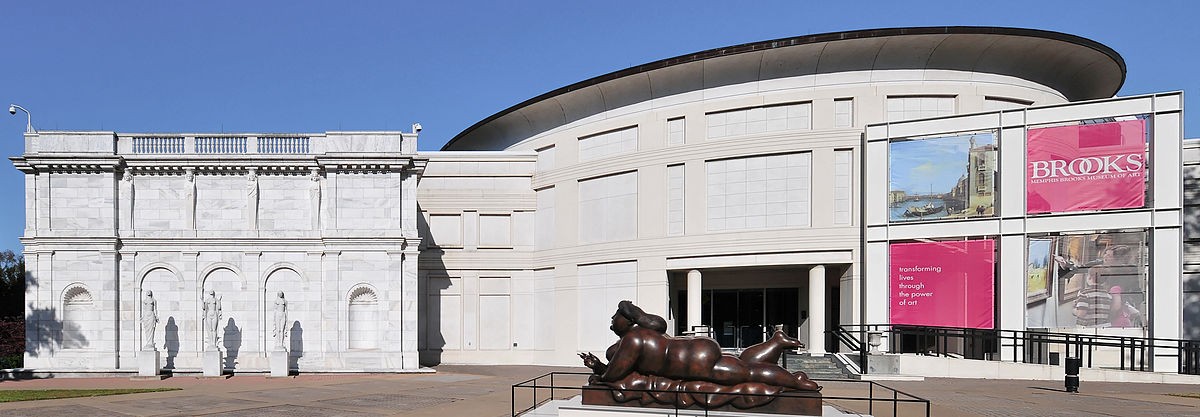
The board of trustees of Memphis Brooks Museum of Art and the institution’s director, Emily Ballew Neff, surprised the city and the museum’s patrons by announcing recently that it would not be averse to leaving its century-old home in Overton Park, where expansion would be difficult. What the possibilities are remain to be explored, whether building a new museum, renovating or rebuilding part of the present facility, or finding an existing building and repurposing it — each one an expensive proposition.
The museum opened in 1916 in a pavilion designed in the Beaux-Arts fashion by James Gamble Rogers, a nationally known architect. That white marble structure is still one of the city’s most beautiful buildings, worthy of the title “jewel box” usually bestowed on it.
An addition in an understated modern style was erected behind and connected to the original building in 1955, designed by local architect Everett Woods. This comprised the Brooks Memorial Art Gallery that I was introduced to when I was 11 or 12, and which I visited many times when I was in high school and college.
Needing more exhibition space, the Brooks commissioned another addition that was completed in 1973. Designed in the Brutalist manner of exposed concrete and structural elements by Walk Jones and Francis Mah, this expansion was to the north, extending from the 1955 wing and not impinging on the 1916 building. The new exhibition halls were open and flowing, with a great deal of gallery space underground. However, a series of directors over the years became dissatisfied with the style and openness of the Jones-Mah building and gradually converted the interior to a warren of formal neo-classical galleries, an untidy fit with the architects’ intentions and the building’s function.
The final expansion, designed by Skidmore, Owings, and Merrill (with the local participation of Askew Nixon Ferguson & Wolf), opened in 1989, providing the museum with a new entrance, a rotunda, an auditorium, a restaurant space and adjacent terrace, loading docks, storage and offices — but an insignificant amount of gallery space. As anyone can see in its emblematic facade and profile, the architects attempted a sort of Postmodern classical design that would not detract from the chasteness and purity of the 1916 building, a task at which they only partially succeeded. The 1955 building was demolished to accommodate the 1989 expansion.
In my role as art writer for The Commercial Appeal for 30 years, I frequently mentioned the inadequacy of the exhibition spaces in the museum, especially in the downstairs galleries, where ceilings are either so low and cramped as to be oppressive or so high that the art and the viewer feel lost. In fact, the part of the Brooks that retains its integrity and is still the best space to look at art is the 1916 building, which after all these years is, to me, a joy to be in.
The sudden announcement that the Brooks would like to move, an announcement made without providing alternatives or ideas about what to do with the museum, if it does relocate, had an air of rush to judgment, even desperation. Obviously, the museum requires better gallery and exhibition space, more storage for the permanent collection, and state-of-the-art security for the protection of valuable and fragile works of art, but museums nowadays also have community responsibilities.
In an interview with this writer when she first came to the job at the Brooks, Neff said, “Museums have a tremendous history as treasure-houses, but it’s also true that every museum struggles with the idea of demographics. A museum must be everybody’s museum, and we must respond to the city’s vitality and diversity.”
To embrace those democratic ideals, Memphis Brooks Museum of Art needs to stay in Overton Park. Regardless, though, the public and the city government need a clearer picture of what the director and the board have in mind, as well as potential sources of funding for such a huge project — whatever that project is,
Fredric Koeppel is a freelance journalist with interests in culture and the arts. He writes the wine review blog, biggerthanyourhead.net.